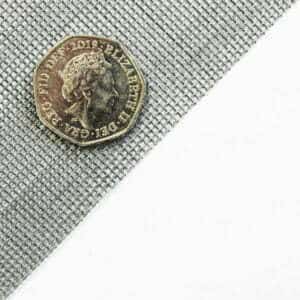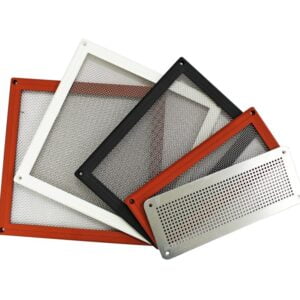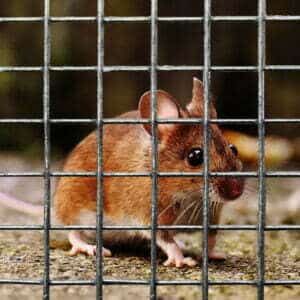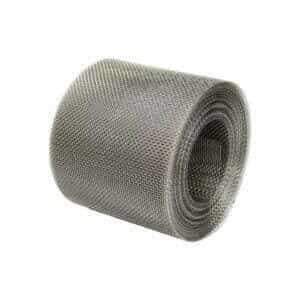







£12.99 – £314.99 inc VAT


This website is secured:
✔ The UK’s Largest Range Of Mesh Products
✔ FREE UK Delivery Included
✔ Immediate Express Dispatch From Stock
✔ Tracked Delivery with Order Updates
✔ 30-Day Returns Accepted
£ Check Out Our Clearance Listing For Savings
@ ☏ Bespoke Sizes & Larger Sheets Available
This 1.31mm hole heavy-duty galvanised steel insect screen mesh, made from 0.28mm wire, is an ideal solution for keeping bugs and insects at bay while maintaining good airflow and visibility. The light wires relative to the hole size make it perfect for this purpose.
Galvanised steel insect screen mesh is particularly effective due to its robust construction and corrosion resistance. The zinc-dipped galvanised finish protects it from the elements, ensuring longevity and reliability. This mesh can be bent and formed by hand, though it is recommended to use gloves for safe handling.
Despite its strength, it offers a large open area, making it an excellent choice for filtration or as a barrier.
1.31mm hole heavy duty galvanised steel insect screen mesh made from 0.28mm wire. This is an insect screen due to the light wires in relation to the hole size. This allows for good airflow and visibility, whilst stopping bugs and insects.
Insect screen made from galvanised steel is ideal for keeping bugs out.
Below is a breakdown of the key characteristics of this galvanised insect screen mesh:
There are many reasons to use galvanised steel mesh for your mesh requirement. Above all, it allows for great airflow while providing strength and structure.
The Mesh Company has an enormous range of wire mesh products. We truly are an industry leader among suppliers of weld mesh and woven wire materials. With the capabilities we have in-house, we can provide virtually anything you require. Chicken wire, insect meshing and rodent mesh materials are also available in large stock quantities at bargain prices.
It is of interest to anyone who needs a light mesh for any application. You would be able to fold this mesh by hand very easily. Once bent it would hold its shape.
Use ‘No More Nails’ or similar for affixing this mesh to airbricks and other vents.
Our group have been in the mesh industry for over 150 years. We are one of the UK’s most trusted mesh suppliers because:
The Mesh Company has an enormous range of insect mesh products. We truly are an industry leader among suppliers of weld mesh and woven wire materials. With the capabilities we have in-house, we can provide virtually anything you require.
Fibreglass, stainless materials are also available in large stock quantities at bargain prices. See our blog for specific information on all of our various woven wire mesh materials.
Galvanised steel woven wire insect screen mesh is a type of screen mesh made from galvanised steel wire. Galvanizing is a process of coating steel with a protective layer of zinc, which helps to prevent rust and corrosion. The galvanised steel wire is woven into a mesh pattern to create a durable, fine mesh screen that can be used to keep insects out of buildings while allowing air to circulate.
Galvanised steel woven wire insect screen mesh is a popular choice for insect screens because it is strong and long-lasting. The mesh is typically available in various mesh sizes (the number of wires per inch) and wire diameters, which can be selected depending on the specific application. The mesh size can determine the level of insect protection provided, while the wire diameter can affect the strength and durability of the mesh.
To make an insect screen frame using galvanised steel woven wire mesh, you can follow these steps:
We would use standard kitchen scissors to cut this mesh to size. Simply line it up in front of you and cut along the aperture. Be careful not to cut across the wires as this can leave a sharp edge.
We have written detailed articles on aluminium fly mesh, stainless steel insect meshing and fibreglass soffit mesh. These guides should help you to make an informed decision before choosing which insect mesh would be the best solution for your requirements.
Contact our team today if you have any questions at all. We are always really keen to help in any way that we can.
We also offer similar products through our highly popular eBay store, check us out there too.
| Woven Mesh Sheet Size | 150 x 150mm x 2 Pack, A4 x 4 Pack (210 x 300mm x 4 Pack), 300 x 300mm (30 x 30cm) Sheet, A3 x 3 Pack (300 x 420mm x 3 Pack), 500 x 500mm (50 x 50cm) Sheet, A2 420 x 594mm (42 x 59.4cm) Sheet, A1 594 x 841mm (59.4 x 84.1cm) Sheet, 1000 x 500mm (100 x 50cm) Sheet, 1000 x 1000mm (100 x 100cm) Sheet, 5 Metre x 1000mm (1 Metre) Roll, 10 Metre x 1000mm (1 Metre) Roll |
|---|
In 2008 Locker Wire Weavers launched The Mesh Company to bring our enormous range of wire mesh products to the general public for the first time. Previously wire mesh was only available for trade customers.
We continue to extend our range, and now proudly offer many forms of mesh and metal products for the best possible prices. We specialise in woven wire mesh. As a group we work closely with architects and designers to develop ground-breaking new applications for our multifunctional range of materials. We also offer state of the art fabrication and engineering for projects of all sizes.
Strong ties with the Warrington community continue to be at the very core of our business. We are proud to invest in the training and developing our staff of all levels in line with the traditions set by Thomas Locker, who founded our group 150 years ago when he invented the electronic loom. We continue to bring ingenuity and strong ethics to our day to day business.
The Mesh Company continues Warrington’s historic role in the wire industry. For more than 140 years, our group has been a leader in the supply and manufacture of woven wire mesh and wire cloth. Having been founded in Warrington, UK in 1878, Locker mesh products still retain the quality craftsmanship and spirit of innovation that were so characteristic then.
Available Options
You will find full rolls of this insect netting here. Please be advised that the majority of woven mesh is usually available in a maximum roll size of 30 metres by 1200mm. Please email us if you wish to discuss purchasing this mesh in any size – sales@themeshcompany.com.
Feel free to call us if you wish to discuss any of our products – (+ 44) 01925 406 602. We are always happy to help in any way that we are able to.
We also offer this product through our highly popular eBay store, check us out there too.




The largest range of wire mesh, chicken wire, wire fencing, woven wire mesh and perforated metal products in Europe, delivered direct from our Warrington warehouse.




Website by: Beech Web Services | Terms and Conditions | Cookie Policy | Privacy Policy | Website Terms and Conditions
Reviews
There are no reviews yet.